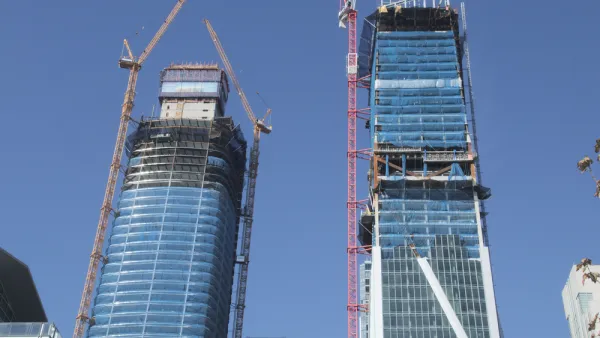Though a handful of recent articles predicted "peak Silicon Valley," new numbers show the region is still producing lots of good jobs and attracting plenty of venture capital.

Last week, Justin Fox at Bloomberg points out, more than one columnist—himself included—predicted the end of Silicon Valley, citing all the things that make it hard to live there: housing costs, tax rates and traffic, not to mention drought, fire, flood and earthquakes.
But, Fox writes, his analysis of new employment numbers released at the beginning of this week show "the opposite of an exodus."
"[M]etro San Jose is back to adding jobs at more than twice the pace of the U.S., and metro San Francisco appears to be bouncing back, too. Among the nation's 50 largest metro areas, San Jose ranked seventh in the rate of job growth from January 2017 through January 2018, and San Francisco was more or less tied for 17th with Houston. The nearby Sacramento metro area came in tenth."
It turns out that predicting the end of Silicon Valley, then debunking the prediction, then making it again, is something of a regular occurrence (Fox has a link to an 18-year-old article along the same lines).
So, though '[t]he argument that Silicon Valley will soon pass its peak may well be right," Fox writes, "I'd be cautious about predicting any kind of precipitous decline."
FULL STORY: Silicon Valley's Demise Has Been Postponed Again

National Parks Layoffs Will Cause Communities to Lose Billions
Thousands of essential park workers were laid off this week, just before the busy spring break season.

Retro-silient?: America’s First “Eco-burb,” The Woodlands Turns 50
A master-planned community north of Houston offers lessons on green infrastructure and resilient design, but falls short of its founder’s lofty affordability and walkability goals.

Delivering for America Plan Will Downgrade Mail Service in at Least 49.5 Percent of Zip Codes
Republican and Democrat lawmakers criticize the plan for its disproportionate negative impact on rural communities.

Test News Post 1
This is a summary

Test News Headline 46
Test for the image on the front page.

Balancing Bombs and Butterflies: How the National Guard Protects a Rare Species
The National Guard at Fort Indiantown Gap uses GIS technology and land management strategies to balance military training with conservation efforts, ensuring the survival of the rare eastern regal fritillary butterfly.
Urban Design for Planners 1: Software Tools
This six-course series explores essential urban design concepts using open source software and equips planners with the tools they need to participate fully in the urban design process.
Planning for Universal Design
Learn the tools for implementing Universal Design in planning regulations.
EMC Planning Group, Inc.
Planetizen
Planetizen
Mpact (formerly Rail~Volution)
Great Falls Development Authority, Inc.
HUDs Office of Policy Development and Research
NYU Wagner Graduate School of Public Service




























